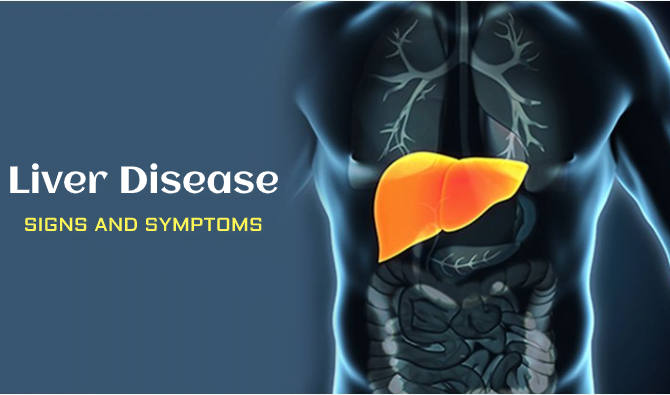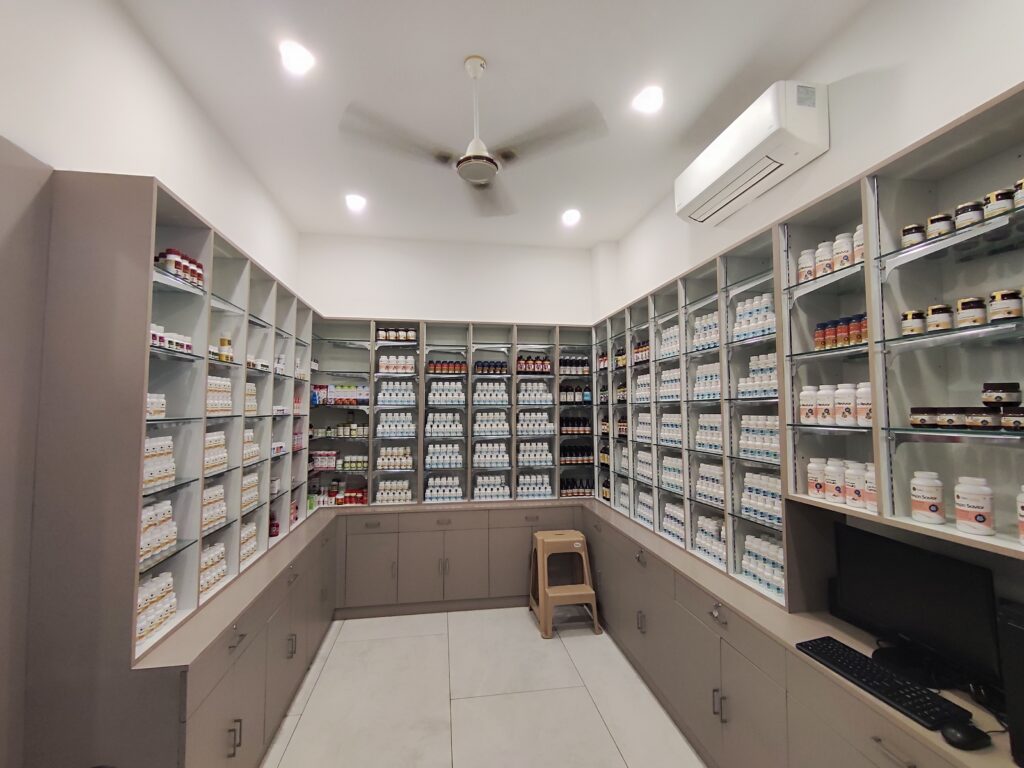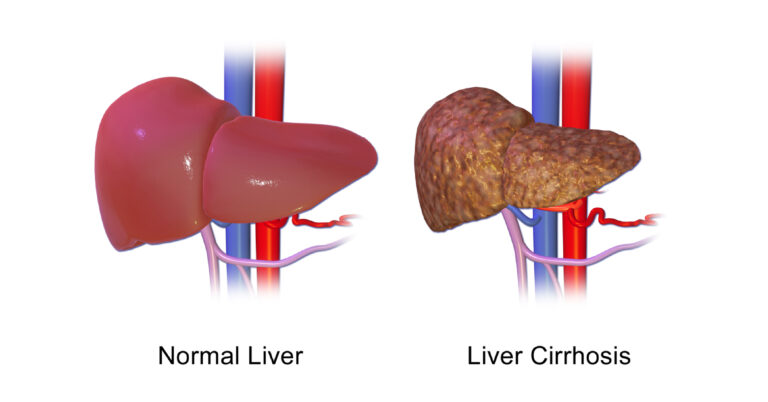Liver Cirrhosis Introduction
Liver Cirrhosis is severe scarring of the liver because of which the liver does not function properly due to long-term damage. The word “Cirrhosis” is derived from the Greek word “scirrhous” which means tawny or orange. In Liver Cirrhosis, a diffusion process of fibrosis occurs that results in a change of liver architecture into abnormal nodules. The root cause of this disease is alcohol abuse and viral hepatitis B and C and results in cardinal features i.e., increase in fibrous tissues, inflammation, and death of liver cells. In Ayurveda, Liver Cirrhosis is considered Yakrit Kshaya and classically, Kumbha Kamala is compared with cirrhosis of the liver. Kumbha Kamala is an untreated stage of Hepatitis or Jaundice, which when chronic, results in Khartava i.e., dryness and Kshaya (liver cell death). In India, 50% of people rely on Ayurveda for the treatment of liver diseases. Ayurvedic herbs and procedures are a promising tool to completely treat liver diseases and even severe cases of Liver Cirrhosis.
Facts about Liver Diseases
- In the US, one out of 400 people suffers from Liver Cirrhosis.
- Every year, 26000 deaths in the US are due to liver cirrhosis.
- Liver Cirrhosis is the 7th leading cause of death in the US and the 11th leading cause throughout the world.
- Every year, two million people die of liver diseases and approximately 1 million deaths among them are due to Liver Cirrhosis.
- The most common cause of Liver Cirrhosis is alcohol abuse, viral Hepatitis B and C.
Stages of Liver Cirrhosis
4 stages of Liver Cirrhosis are mentioned:
Stage 1: In this stage, there are no complications and is, therefore, known as compensated cirrhosis. There is some scarring of the liver tissue with mild symptoms.
Stage 2: In this stage, varices (enlarged and swollen veins) develop with worsening of portal hypertension.
Stage 3: In this stage, there is advanced scarring with swelling in the abdomen. This stage results in complications with possible liver failure.
Stage 4: This stage is the end-stage liver disease and is life-threatening.
Types of Liver Cirrhosis
It can be classified into two types:
- Macronodular Cirrhosis: Large nodules of various sizes and large fibrous scars are present.
- Micronodular Cirrhosis: Smaller nodules of size less than 1 mm are present. This usually occurs in Alcoholic Liver Disease.
Causes of Liver Cirrhosis
Ayurvedic point of view
- Mithya Samsarjan (improper regimes and diet after the completion of Panchakarma therapy)
- Ushana, Lavana, Vidhahi Anna Sevan (intake of hot, salty, burning sensation doing a food)
- Arsha, Pleeha, Grehani Dosha Karshan (emaciation due to piles, splenic disorder, and sprue syndrome)
- Aadharniya Vega Dharna (suppression of urges)
- Aama (product of improper metabolism and digestion in the body)
- Asuchi, Ruksha, Virudh Bhojan (intake of unclean, dry, and mutually contraindicated food)
- Improper administration of Vamana (emetic therapy) and Virechan (purgative therapy)
- Consequential unctuousness in the body due to negligence of treatment of diseases like Pleeha Roga (splenic disorders)
Modern point of view
- Alcohol abuse
- Viral Hepatitis B and C, viral Hepatitis B accounts for 30-70% of cases.
- Alpha-1-antitrypsin deficiency
- Galactosemia
- Scarring of bile duct
- Chronic Constipation
- Fat accumulation in the liver
- Glycogen storage disorders
- Genetic disorders like Wilson Disease and Hemochromatosis
- Prolonged exposure to environmental toxins
- Severe reaction to certain prescribed drugs
- Liver congestion with repeated bouts of heart failure
Symptoms of Liver Cirrhosis
Ayurvedic point of view
- Aatop (gurgling sound)
- Kukshe Aadhman (distension in the abdomen)
- Agninashta (loss of power of digestion)
- Aang Sada (prostration)
- Hast-Pad Shotha (edema in hand and legs)
- Daurbalya (weakness)
- Aruchi (Anorexia)
- Vipaka (effect on body after digestion)
- Pipasa (excessive thirst)
- Angmard (body aches)
- Chardi (vomiting)
- Murcha (fainting)
- Angsad (prostration)
- Aasya-Vairasya (distaste in mouth)
- Kosth Vataj Shool (colic pain)
- Parv Bhed (pain in finger joint)
- Salkshan Gandatva (smoothness of chin)
- Karshya (emaciation)
Modern point of view
Cirrhosis often shows no signs and symptoms unless the liver damage is extensive. In 1/3rd of patients of Cirrhosis, no signs and symptoms are present. The patients who show symptoms, they may include:
- Anemia
- Weakness
- Ascites
- Early bruising
- Weight loss
- Palms of the hands turn red
- Gastrointestinal bleeding
- Encephalopathy – damage or disease that affects the brain
- Spider angiomas
- Swelling in feet, ankles, and legs
- Enlarged breast in men
- Loss of sex drive in men
- Early menopause
- Personality changes like confusion, difficulty in thinking, etc.
- Yellow tint in whites of the eye
- Itchy skin
Ayurvedic treatment of Liver Cirrhosis
- Snehana (oleation therapy)
- Swedana (sudation therapy)
- Virechana (purgative therapy)
- Niruha Basti (a type of enema therapy)
- Anuvasan Basti (a type of enema therapy)
- Siravedhana (blood-letting therapy)
- Shamana Therapy (use of herbs mainly Pitta pacifying and formulations)
- Rasayana Therapy (rejuvenation therapy)
- Livo Savior, an ultimate formulation by Yukti Herbs, is a boon for patients suffering from Liver Cirrhosis. With its unique combination of herbs, it helps to treat Cirrhosis deep from the roots.
Herbs useful for Liver Cirrhosis
- Bhuiamla (Phyllanthus niruri)
- Kalmegh (Andrographis paniculata)
- Bhringraj (Eclipta alba)
- Punarnava (Boerhavia diffusa)
- Kasani (Cichorium intybus)
- Milk thistle (Silybum marianum)
- Mulethi (Glycyrrhiza glabra)
- Arjuna (Terminalia arjuna)
- Haridra (Curcuma longa)
- Pippali (Piper longum)
- Tulsi (Ocimum sanctum)
- Vidanga (Embelia ribes)
- Rohitak (Tecoma undulata)
Dos and Don’ts for Liver Cirrhosis Patients
- Include fruits like ripened kiwi, pomegranate, apple, cast apple, grapes, etc in your daily diet.
- Avoid fruits like orange, lemon, mango, watermelon.
- Avoid bitter gourd, chilly, pickle, pumpkin, Saka Varga (leafy vegetables).
- Include a non-veg diet with Dashmoola Dravya.
- Avoid all kinds of Matsya Mansa (all kinds of fish) and red meat.
- Avoid Dhadhi (curd).
- Avoid refined carbohydrates like white bread, pasta, white rice, etc.
- Include Moong Dal (green gram lentil) in the diet. Avoid Mash Dala (black gram lentil).
- Take distilled cow urine – 10 ml twice a day.
- Avoid Chinta (anxiety), Shoka (grief), Krodh (anger).
- Include Dugadh (milk), Takra (buttermilk), Ghrita (Clarified butter) in your diet.
- Take an adequate amount of water every day approximately 2 to 2.5litre.
- Take an adequate amount of fiber daily.
- Avoid saturated fat and a high caloric diet.
- Include olives, flaxseeds, and avocados in your diet for sure.
- Avoid coconut and palm oil in your diet.
- Quit alcohol intake and smoking.
When to see a doctor
If you experience any of the below symptoms, then it’s an alarming sign that you may suffer from Liver Cirrhosis very soon. So, you must immediately consult with your doctor.
- Feeling tired and weak
- Weight loss without trying
- Nausea
- Vomiting
- Loss of appetite
- Abdominal pain
Conclusion
Liver Cirrhosis is a very deadly and progressive disease. Although western systems of medicine have a modern parameter to diagnose the disease early, no definite therapy is available and most of the procedures are symptomatic. On the other hand, Ayurveda presents specific treatments like Pitta pacifying therapy, purification therapy along the use of Pathya-Apathya seems to treat the disease from roots.
All the recommended herbs and a perfect blend of herbs named “Livo Savior Capsules” from Yukti Herbs are available at – www.yuktiherbs.com. You may also call or WhatsApp at +91 752-786-9388 or +91 828-386-5637 or email at yuktiherbs@gmail.com











